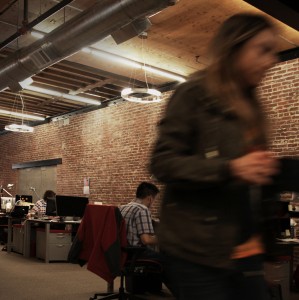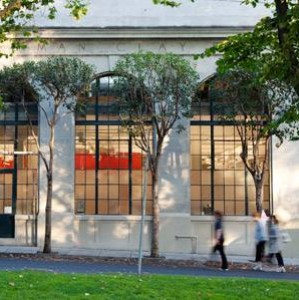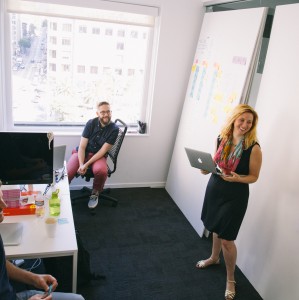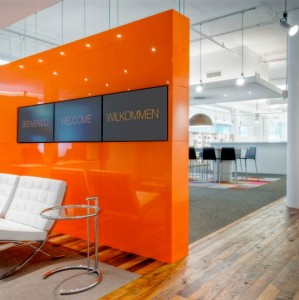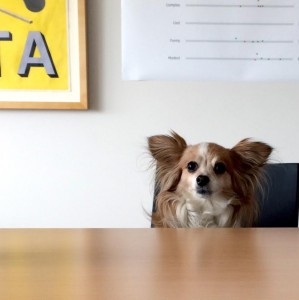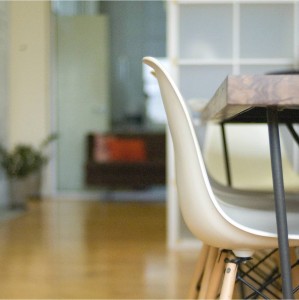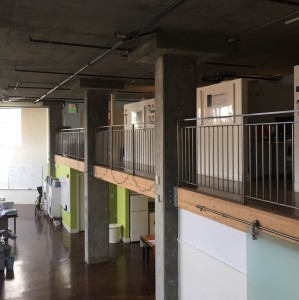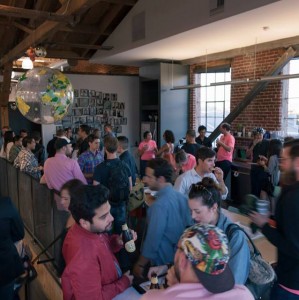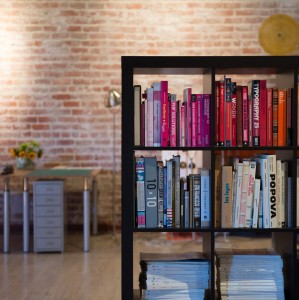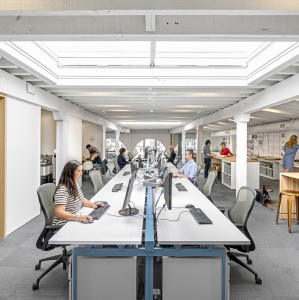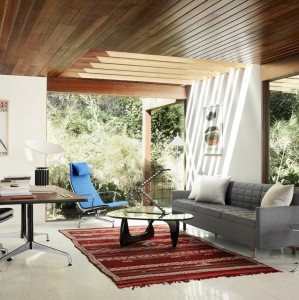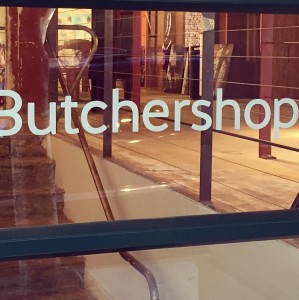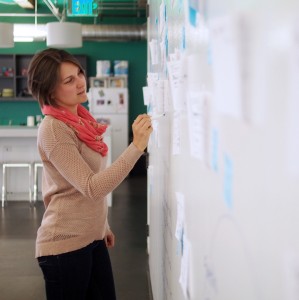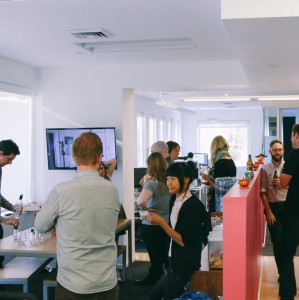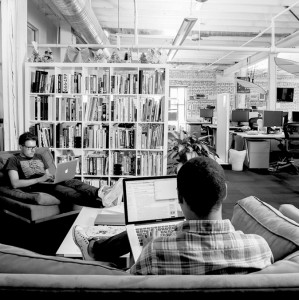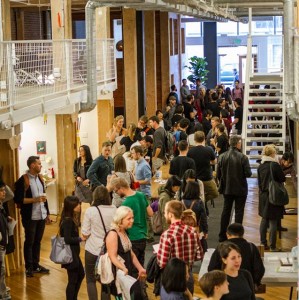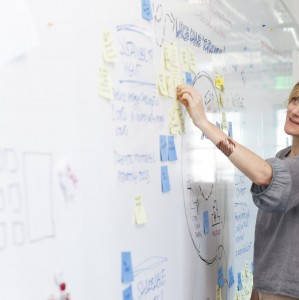Curious about the studios influencing design today? Us too. We couldn’t help but take the opportunity to get to know the studios and designers involved in this year’s SFDW just a little bit better. From how they prepare their coffee (of critical importance to the creative process) or how the Bay Area inspires their design thinking, these brief interviews offer inspiration and expertise that may even fuel some of your own design challenges. More than anything, these studios can’t wait to open their doors to the community during Design Week.
Sign Up for Studio Tours Day 1 Sign Up for Studio Tours Day 2
Founded in 2009, Butchershop is an award winning full service creative agency based in San Francisco with expertise in branding, storytelling, web design and development, and content creation. We specialize in Consumer Products, SaaS, Technology, Real Estate, Food & Beverage, Hospitality.
Can you tell me a little about which product got your studio off the ground?
Black Star Beer was our first major brand we re-launched in 2010.
What’s your studio’s design philosophy?
Simple is Hard. Start with the story you are trying to tell, then style, then concept, then design, build, iterate. Eliminate fear.
What motivates you to do great work?
Our work! It’s all we have or we’d be out of business. Our clients need us and we really come through on that relationship. It is very important to us.
What’s your studio’s superpower?
We are allergic to bullshit. Comes in handy in this business.
What’s the first project your company worked on?
Black Star Beer in 2010 was a tremendous relaunch for Butchershop. Black Star Beer was a little engine that could brand from Whitefish, Montana. Minott Wessinger, brewing legend, believed in us to do some pretty amazing things and we did!
How do you go from concept to finished product?
We stick to a process. It’s the most important thing! Know thy process!
Where does the team find inspiration? How do you keep the team inspired?
I think we are all good collectors and searchers. Everyone has their own way of getting images and examples of things that show what they mean. We also use SLACK and share things everyday on channels like #design #development #office etc. We love siteinspire.com, abduzeedo.com
What keeps you up at night?
Solving clients problems. For example, how do you change the culture, tone + voice, look + feel and product of a major brand or company to become something powerful and special. That shit will keep you up when you throw time and money on the fire too.
What medium have you never worked with but would like to try?
Body paint.
What does your leading designer’s / CEO’s desk look like?
It looks like a glorious battlefield of screens and the carnage that comes from finding good ideas.
What’s a typical day like at your office?
Starts at 8am. Ends at 8pm. Everyone is wearing headphones or in meetings. Sometimes clients come by and they get jealous that their office isn’t as cool as Butchershop. But Butchershop is only cool because there aren’t that many rules and people eat good food. Eclectic bunch of people here at the shop. I’m sure the crew would have some other insights.
What project has had the biggest impact on you?
I think as an agency when we got to name The San Francisco Shipyard as a new district in San Francisco, we felt a fair shake of pride. I also think when we can trace our work to direct results like helping a company raise $115 Million in funding, it has a great effect on us as a team and agency. We’re doing something right.
What are three things you believe in right now?
1. We believe that our work means something.
2. We can’t take ourselves too seriously.
3. We need to take ourselves seriously.
What are you currently fascinated by? How is that feeding into your work?
I think we are fascinated by “users” and experiences. We are also challenged every day by a world that is moving very fast and we try our best to help companies and brands keep up.
What excites you about the future of design?
Design, fundamentally will always have the same principles, but the interpretations combined with technology and what our clients customers are demanding will always be evolving. At the end of the day it’s about communication and we are excited to find ways to connect. It will always be about connection and risk. It makes it all worth it.
How does San Francisco influence the work you do?
San Francisco is a fantastic place to call home base. There are so many talented designers, developers, creatives, agencies that make this one of the most competitive places to be. It is something special and should be held high when an agency can standout in this city. People all around the world have eyes on this place and we are a part of it. It truly is a grand experiment that weeds people out pretty quickly that don’t cut it.
Any upcoming, exciting projects you can talk about?
We are currently rebranding Okta that is exciting but we can’t talk about it too much. We also have a few other projects that we can’t mention at the moment but are dying to talk about. So cool. Damn NDA’s.
Wine, liquor or beer?
Open bar.
What are studio’s tips for other designers out there who may just be getting started?
Make your portfolio the best thing you’ve ever created. I can honestly say that it is the single most important thing we look at to make a decision on next follow up. We keep a short list.
If your studio had a motto, what would it be?
Let’s Make Amazing.
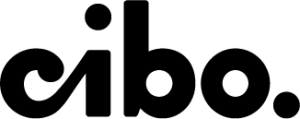
Cibo is a brand experience agency that creates and develops omni-channel brand stories that drives deeper consumer engagement for companies. Founded in San Francisco in 2010, Cibo brings deep capabilities in marketing and advertising together with expertise in digital experience design, emerging technologies and cross-platform brand storytelling.
What’s your studio’s design philosophy?
Help our clients build brand experiences that matter.
What motivates you to do great work?
Creating beautiful and useful things that can add value and purpose to our world.
What’s your studio’s superpower?
Collectively, we are nimble.
Individually, well you’ll just have to go to our Facebook page to see who we picked for Halloween.
Inspiration. Where do you find it?
Everywhere- museums, magazines, television, nature, people, music, travel. It’s less about where and more about how you observe/experience things. Anything can be inspiring if you’re open to it.
What 3 things do you believe in?
1. Work smarter, not harder
2. Approach it from all angles
3. Don’t stop until you’re proud to put your name on it
What are studio’s tips for other designers out there who may just be getting started?
1. Be passionate
2. Question and challenge everything
3. Just do it. Ask for permission later
How does San Francisco influence your work?
Being able to tap into the creative energy and experiences from the diverse community of makers and shakers who live and work here. It’s also a very technology driven city and that is a big influence in our work. Not for the sake of being gimmicky, but for the sake of making things work better, faster and smarter.

Cooper is an award-winning design firm based in San Francisco. We collaborate with organizations to uncover product, service, and business opportunities, and establish a clear direction for their future. We also provide training and mentoring in research, design, and strategy, to help people and teams design successfully for themselves.
What’s your studio’s design philosophy?
You need to understand who are the humans that are going to use the product and what are their goals, and only then you can create something that can be meaningful and useful. We’re always trying to focus on the eco-system in which the product that we’re designing exists.
How do you go from concept to finished product?
Once we understand the goals of our target group, we create models of the users called personas, and then we put those into stories. We create scenarios that help us look into experiences that users will have, ideally interacting with the eco-system or a product that we’re working on. We use that as a way to prototype. Based on these stories, we move to the inspirational stage where we start looking broadly at the diverse approaches on how to address different key aspects of those scenarios.
What’s a typical day at Cooper like?
Depending on the stage of the project, a typical day might be that our design team is onsite with our client and we’re collaborating with them doing some design exploration or experience workshop where we’re trying to understand their brand better. Another type of day would be when we’re doing a lot of research and when we’re out in the field, shadowing our users. And, finally, we also have days when team is spending their day in one room figuring out the actual design solution. We’ll have a couple of service designers and visual designers working together.
Where does the team find inspiration? How do you keep the team inspired?
We find inspiration in a lot of places. All the clients we’re working with are inspiring in a certain way – whether it’s the problems that they’re trying to solve or the populations they are trying to serve. Every client that we work with wants to make this world a better place. We also have a lot of employees who teach. Everyone at Cooper is curious, and people are getting inspiration from each other.
What’s Cooper’s superpower?
We are great at understanding what humans truly need – not what they want but what they need, and then translating that understanding into a product that someone is going to use. We don’t rely on substances of inspiration for our solution accommodations. Everything we do we has to trace back to what we saw or observed, and we share that information with the client. We want to enable the client to make the best informed decision possible.
How does San Francisco influence the work you do?
San Francisco has more tolerance to all the crazy ideas.
What’s the first project Cooper worked on?
In 1997 we worked on an inflight entertainment system for Sony. This was one of the first systems that had the touch screens that you could interact with and watch on-demand movies during the flight.
If Cooper had a motto, what would it be?
Humans first, technology second.
What excites you about the future of design?
Cooper has been around for a long time, but it feels like we’re just getting started. Most companies out there have finally seen the value of design, and they are more willing to bring that human centered thinking to the business table. Products turn out to be more tailored to users.
What are your tips for other designers out there who may just be getting started?
Design thinking and empathy for users is important but the way you communicate those findings to the final decision makers is just as important.
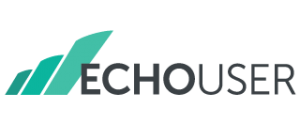
EchoUser is the Any Experience design firm. EchoUser blends research, design and testing in an end-to-end UX solution that helps our diverse clientele create the ideal user experience through their products and services. Based in San Francisco, our clients include Cisco, Google, NetApp, Oracle, Salesforce.com, Threadflip and the Bay Area Rapid Transit.
We got to speak with Mick McGee, CEO of EchoUser, who has worked for 15 years innovating UX research methods, and creating UI standards and processes. One of his last projects before EchoUser was defining a comprehensive UX methods program at SAP.
What’s EchoUser’s design philosophy?
We try to apply the design philosophy and the UX toolkit to anything; aka, Any Experience. The user experience point of view always says: “What’s the problem? What can be improved?”, and that’s when you capture research and design, no matter the domain or product. We have a strong toolkit and love applying it to the complex world.
What’s EchoUser’s superpower?
Our people and philosophy are the superpower and secret sauce for us. Our clients are attracted to our team. Beyond that are the many projects we’ve worked on individually and as a company to create a diverse portfolio.
What are studio’s tips for other designers out there who may just be getting started?
Many designers that are graduating undervalue the work that they do at school. Usually they have already been applying design or research for years. Many people have backgrounds in other areas – be it journalism, architecture or philosophy (I was a system engineer myself). Those may not directly correlate with being a designer. But just about everyone has some interesting related work before they become a designer, and you can show that.
The other part that people are usually not comfortable with doing is showing the process. They want to show the completed design. Seeing your sketchbook helps people understand how you think.
Finally, find something that you really really like and figure out how to improve it. “How can I make this better?” You are probably going to build your career by working on these side projects. You’re never only going to do things that you’re passionate about. Everyone wants it, but there is half the job that you need to do, and half the job that you want to do. Some people try to only chase the passion and they will may not get there because they will not take the steps to get to the passionate place – there is always hard work.
What medium have you never worked with but would like to try?
Our company touched pretty much every medium possible. If we’re talking about me
personally, I enjoy drawing and sketching but I don’t think I’m very good. I’m probably best at complex research design, figuring out how to attack or approach a problem. I really enjoy doing that. What I also like doing is coding. Not so good at that either! There is no individual that can do everything, aka, the unicorn, and you probably shouldn’t even try. You can be really quite good at a few things and have awareness – of the other things – that’s my general advice.
How did your background help you in design? Do you feel like the Bay Area design scene is influenced by the startups culture?
My system engineering background is definitely helpful in design. Context is what comes from system engineering along with optimization. I personally tend to think in a formulated way. I have all of the variables, and if I can tweak them, I can improve some user experience. So, context and maximizing the user experience comes from system engineering.
Going to startups, we’re in the best place in the world. There is no doubt about it – if you actually want to create something with your design that has a purpose. There are a lot of places like that, but the number of companies, the money behind them is unique here. There are so many opportunities around here.
How do you go from concept to finished product?
My basic advice to a client is be true to the user. As long as you stay true to the user-centered process, that can influence the mission of the company or design. There is a lot of work in setting things correctly from the beginning. We do a lot of research and, information design before getting anywhere near actual interaction design. We always take the time to focus on the information, the context, the system, and then – do the good work.
If EchoUser had a motto, what would it be?
Any experience.
Chasing the bold.
Chasing any experience.
Complexity destroyers, experience explorers.
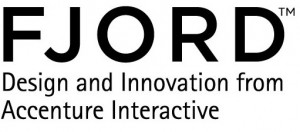
Fjord has been a pioneer for design and innovation since we opened our doors in 2001. Together with our clients, we’ve created services that make millions of people’s lives a little better every day. We help bring breakthrough digital services to life, redesigning people’s relationships with the world around them. We help our clients answer critical questions around customer relevancy, loyalty, and delight to conceive, design, and deliver innovative service strategies.
What’s your studio’s design philosophy?
Design at the heart
What motivates you to do great work?
We have the goal to be the foremost design and innovation partner for the world’s leading companies, shaping how humans work and live.
What’s your studio’s superpower?
Levitation
What’s the first project your company worked on?
San Francisco’s first project was Paypal.
How do you go from concept to finished product?
Iterative, collaborative, user focused design process.
Where does the team find inspiration? How do you keep the team inspired?
Art, architecture, music, food, dance, physical activity, travel…the list is endless. We share our inspirations with the other team members on a regular basis.
What keeps you up at night?
Nothing! Sleep is key to a healthy designer.
What medium have you never worked with but would like to try?
3D printing
What’s a typical day like at your office?
There is no typical day at Fjord, but it’s a combination of collaborative client work, educational share outs, team lunches, fighting over control of the Sonos, and designing great experiences.
Does the firm have a mascot / sacred room / nicknames / anything quirky?
Our mascot is a Boston Terrier named Tux. Our sacred room is the phone booth, otherwise known as the Hot Box. Ask us about our food-inspired nick-names.
What project has had the biggest impact on you?
Fjord collaborated with colleagues at Accenture and partners Philips and Emotiv to explore how we might be able to help design a better future for ALS patients.
https://www.fjordnet.com/workdetail/philips/
What are three things you believe in right now?
“Living services’’ represent the coming third wave of digital disruption
More and more physical actions and items will become data driven services
A service becomes truly valuable when it anticipates user needs and learns from past behavior.
What are you currently fascinated by? How is that feeding into your work?
The potential of wearables. We are excited to design for new touchpoints as wearables become more mainstream.
What excites you about the future of design?
The future is now!
How does San Francisco influence the work you do?
We take pride in being active local citizens of San Francisco. San Francisco has an “anything goes” attitude and we are not afraid to try new things as apart of our design process.
Any upcoming, exciting projects you can talk about?
Check us out at the Solid Conference June 23rd where Fjord’s Andy Goodman will be speaking about Zero UI: The end of the screen-based interface.
What are studio’s tips for other designers out there who may just be getting started?
Be curious and passionate. Find someone who believes in you.
If your studio had a motto, what would it be?
Keep evolving.
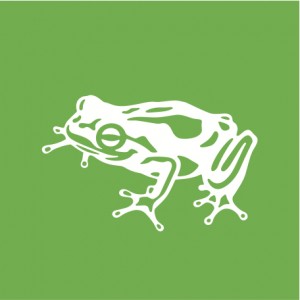
frog is a global product strategy and design firm. Our work solves problems, anticipates the future, and advances the human experience. We are more than 600 strategists, researchers, designers, and technologists who consult and partner with clients across industries. Headquartered in San Francisco, we have offices in Amsterdam, Austin, Boston, London, Milan, Munich, New York, Seattle, Shanghai, and Singapore.
We got to speak with Francois Nguyen, frog Creative Director, who is responsible for ensuring standards of design excellence, over seeing the vision of projects, managing the team, pursuing new business, managing client relationships and most importantly, continuing to grow by actively listening and learning.
What’s your studio’s design philosophy?
We create work that solves problems, anticipates the future, and advances the human experience.
What motivates you to do great work?
I’ve always been inspired by great work, so I feel like my chance to give back is to create work that hopefully inspires somebody else.
What’s your studio’s superpower?
The ability to attract talent. People come here because they’re passionate and inquisitive and want to be challenged. There’s a culture of intensity and inspiration that makes us all like being around each other.
What’s the first project your company worked on?
frog started in 1969, and so we’ve got a rich project history. We first became known through the work we did for the German electronics brand WEGA, but one of our most well known early projects is the “Snow White design language” that frog’s founder, Harmut Esslinger, designed with Steve Jobs.
How do you go from concept to finished product?
That’s our secret sauce.
Where does the team find inspiration? How do you keep the team inspired?
We look at nature, listen to music, eat tasty food and argue with each other. Basically, we derive inspiration from anything that stimulates, provokes or seduces. This is how I try to keep my team inspired, by stimulating, provoking and seducing them. Last one, maybe not so much.
What keeps you up at night?
What keeps me up at night lately is making responsible design. I’m much more sensitive to the physical plastic we produce and put out into this world, and so it better be a worthwhile product that is going to stay around.
What medium have you never worked with but would like to try?
I have never worked in film and so I’d love to do that. It’s a very effective storytelling medium; I just wish I were photogenic.
What does your leading designer’s / CEO’s desk look like?
You’ll find typical stuff like sticky notes and other designer-y tools but a frog desk is generally a bit grittier and dirtier. This messiness comes from trying to process too much at a time.
What’s a typical day like at your office?
First, we drink our coffee. Then, the day begins with each team doing a stand-up meeting to align on daily tasks. Then you’ll witness a blur of sketching, post-it notes and passionate debate. After lunch, there will likely be a design critique somewhere in one of our war rooms followed by more heated discussion, a flurry of work and then a coffeetime break at 4pm where everyone stops work, grabs the snack of the day and plays pool or ping pong. Then we design some more and until its time to leave for happy hour.
Somewhere in that process, award-winning designs emerge from that whirlwind.
Does the firm have a mascot / sacred room / nicknames / anything quirky?
Our frog logo, called Friedolin, is our mascot and pops up everywhere throughout the studio and in our presentations. We have some sacred rooms but cannot tell you where they are because I don’t know myself.
What project has had the biggest impact on you?
The Sound United project. It involved designing nine products across three distinctive brands integrating everything from quantitative data research and strategy to delivering final production units. It was an exciting challenge to work with all of the project’s constraints, but the rich complexity was very inspiring. Plus, any chance I get to work on a music-related project makes me happy.
What are three things you believe in right now?
1) The convenience that comes with technology is weakening our mental and emotional constitutions.
2) We consume way more than we can digest.
3) Comfort will kill your dreams.
What are you currently fascinated by? How is that feeding into your work?
I think about longevity and repeat value: the qualities that certain things—such as a film or a song—possess that keep me returning to it. I think about how to incorporate these attributes, characteristics and properties into my design work.
What excites you about the future of design?
We are making significant advancements in material science and manufacturing processes. This is already changing the way products look and feel and it will continue to expand the boundaries of what is possible with product design.
How does San Francisco influence the work you do?
Alfred Hitchcock is my favorite movie director of all time and San Francisco was his favorite city. Many of his movies took place in this great city and that’s one of the reasons I moved here. It is clear why Sir Hitchcock loved this city: San Francisco is filled with mystery, hidden stories, enigmatic locations and intriguing people. A perpetual sense of wonder fuels my creative process. It is important for designers to constantly ask, “ Why?”
Any upcoming, exciting projects you can talk about?
You’ll have to visit our studio tour to see…
Wine, liquor or beer?
Whiskey, always.
What are studio’s tips for other designers out there who may just be getting started?
Understand the space you live in, where you fit in, and your point of view. Design is all about context. Always be aware and ask if what you’re designing is relevant.
If your studio had a motto, what would it be?
I can’t speak for the studio as a whole, but for me it’s an ode to Tupac: “first to blast, last to dash.”

Herman Miller is a recognized innovator in contemporary interior furnishings, solutions for healthcare environments, and related technologies and services. A publicly held company headquartered in Zeeland, Michigan, we have manufacturing facilities in the United States, China, Italy, and the United Kingdom and operate through several focused businesses. All of them work to design and build a better world around you.
What’s your studio’s design philosophy?
We believe that people are the most important thing in the room; promoting servant-leadership throughout the organization.
What motivates you to do great work?
That we work for a company that researches, thinks and cares about creating great places to work every day.
What’s your studio’s superpower?
Our Living Office story.
What’s the first project your company worked on?
Furnishing multi-generational homes in the early 20th-century.
What’s a typical day like at your office?
Fun! A mix of research, teaching students, planning and hosting great events and much more.
What excites you about the future of design?
Innovation and use of materials in a sustainable way.
How does San Francisco influence the work you do?
Great acceptance of diversity, the constantly changing and growing influence of technology, expansion into the East Bay.
What are studio’s tips for other designers out there who may just be getting started?
Always keep learning and expose yourself to things that interest you.
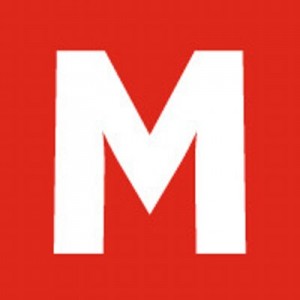
As a strategic and creative partner, MetaDesign works closely with client companies to build their brands and ensure their ongoing success. With studios in Asia, North America, and Europe, we combine design, strategy, and communication expertise, and count international corporations and unknown startups alike among our clients.
We got to speak with Lindsay Gravette, Creative Director of MetaDesign’s San Francisco office.
What’s your studio’s design philosophy?
Everything we design is purposeful. Every pretty picture needs a story, and every story needs a surprise.
What motivates you to do great work?
Solving difficult problems, and never doing the same thing twice.
What’s your studio’s superpower?
Mammoth moxie.
What’s the first project your company worked on?
The San Francisco studio opened in 1992, and its first project was Stop Stealing Sheep & Find Out How Type Works by Erik Spiekermann.
How do you go from concept to finished product?
Wandering into the wilderness and discovering a new place.
Where does the team find inspiration?
Anywhere and everywhere.
How do you keep the team inspired?
Sharing, fighting, laughing, drinking.
What keeps you up at night?
Wondering if we’ve taken something far enough to surprise ourselves and the client.
What medium have you never worked with but would like to try?
Oculus Rift.
What’s a typical day like at your office?
Stand-ups, heads down, critiques, laughing, meetings, lunches, Slack, email, cat photos, heads down again, drawing, imitating coworkers, shut down.
Does the firm have a mascot / sacred room / nicknames / anything quirky?
Steel-plated floors—they’re sacred and quirky.
What project has had the biggest impact on you?
Designing the new MetaDesign website with 300 people in six offices around the world has been a major undertaking. It’s forced us to address Meta’s history while building the brand for the future.
What are three things you believe in right now?
Typography, baseline grids, and user experience.
What are you currently fascinated by?
Designing with only one typeface weight.
How is that feeding into your work?
Strict design rules can lead you in completely new directions.
What excites you about the future of design?
Change.
How does San Francisco influence the work you do?
I’ve lived in SF for over 20 years, so the city is in everything I do.
Any upcoming, exciting projects you can talk about?
Lots of smart work on new tech we can’t discuss yet … and our own website.
Wine, liquor or beer?
I don’t really drink, but in the studio it appears to be a tossup between margaritas, Stella, and Champagne.
What are studio’s tips for other designers out there who may just be getting started?
Try everything, and don’t be too comfortable.
If your studio had a motto, what would it be?
Lorem ipsum dolor sit amet.
Method creates experiences that matter by deeply changing businesses with design. We do this by using the lens of experience design to clarify and deliver the brand promise, understand the changing needs of the customer, and align and improve the customer journey. Located in SF, NY and London, we have over 15 years experience in delivering and launching innovative new products and services with clients such as Lush, Barclays, Google, and Microsoft.
How would you describe what Method does?
We are an experience design studio driven by passionate thinkers and makers who care about good design done right. We work with businesses to design connected experiences that deliver on the brand promise in every interaction. Even if client comes to us with a very specific problem – we consider everything.
What’s most powerful is that we use design tools to solve business problems. This approach allows us to have more of a partnership relationship with our clients. We continue to be excited about the work because more and more of our clients are understanding the impact design can have on their business.
What motivates you to do great work? / Where does the team find inspiration? How do you keep the team inspired?
It’s all about the people! What I love about our process and our work is that we truly look for ways to make everything we do have a human impact. We consider how everything we touch is affecting people’s lives and that grounds us in our work. It’s so critical to be able to connect to the people who interact with the finished product.
What’s a typical day like at your office?
We’re a pretty early office. Our day usually starts before 9 AM. We have an exceptionally elaborate coffee situation. Drip, French press, espresso — we have it all. That first 20 minutes of our day is so important. It allows us to transition from home and commuting to the office. Settling in and starting the day together helps us all connect before we dive into the work.
After that, it’s off to the races. There are often meetings with clients and each other (with occasional ping pong breaks as needed). Our speaker system is always playing music so the environment is loud and fun throughout the day. Lunch is also an important touch point. We have a big center table where we eat lunch together every day. It’s a powerful way to be able to connect, check in and foster collaboration.
Does the firm have a mascot / sacred room / nicknames / anything quirky?
We have a lot of dogs! We’re very pet friendly and it’s a unique cast of characters. Right now we have a boston terrier, jack russell, silver lab, terrier mix, and are about to add a greyhound. There’s nothing like a puppy to turn around a bad day!
What project has had the biggest impact on you?
It would have to be the workshop with collaborated on for the IxDA15 (Interaction Design Association) conference. We were challenged as a group to design a workshop that breaks the boundaries of traditional conference workshops while pushing the attendees to expand their thinking beyond typical workplace processes. An idea quickly turned into an array of electronics. It was really inventive and experimental. The outcome, Henri, let people literally think outside of the box and be productive while playing. What was most impactful for me was to see that the team didn’t have to have a client or financial reward to be motivated to do groundbreaking work. It wasn’t anything other than seizing an opportunity to learn and teach others. That intrinsic motivation is so fun to see!
What excites you about the future of design?
The endless opportunities we’re seeing and the increased value that companies and people are placing on design. It used to be that design was the icing on the cake. Now it’s an integral part of building and sustaining a business, and we’re leading those conversations. It’s changed the entire dynamic of how we partner with our clients. It’s a great time for the design community.
How does San Francisco influence the work you do?
We have offices in San Francisco, New York City and London and each of these cities has an impact on our work.
San Francisco definitely has a west coast vibe. Our work has a level of innovative thinking that is very unique to this part of the world. It’s not even about thinking outside of the box. It’s exploding it. That’s true of San Francisco more than anywhere else in the world and we can feel that energy in the clients, recruits, and design community at large. That energy fuels and inspires every project we do. What’s great about Method is that we often travel to the other locations for projects. With that we pick up ideas from each city to bring back home.
What are studio’s tips for other designers out there who may just be getting started?
We want to see how you think. It’s never just about the final product you create. It’s easy to tell if you have the right skill level, but we want to see your ability to think through very challenging and complicated problems. This is increasingly true as design evolves to not just be about that final deliverable, but about the deep level of thinking behind it.
If your studio had a motto, what would it be?
We have such a diversity of people in our studio and clients. Ultimately that drives us to collaborate with our clients. It takes being open, partners and passionate thinkers and makers.

R/GA, the company for the connected age, develops products, services and communications to grow our clients’ brands and businesses. Founded in 1977, the agency has offices around the globe and has been a pioneer at the intersection of technology, design and marketing with work spanning web, mobile and so cial communications, retail and e-commerce, product innovation, brand development and business consulting.
What’s your studio’s design philosophy?
Since R/GA’s foundation, everything we design comes from a seamless collaboration between art and science. We believe the best work is created when technologists and artists work closely together. The collaborative nature of the Bauhaus school has always been an inspiration for us.
What motivates you to do great work?
The prospect of using design to improve the world around us serves as a huge motivator in everything we do. It has been shown time and time again that great work not only reflects culture, but helps shape it as well.
What’s your studio’s superpower?
Shapeshifting. In today’s landscape the ability to change, shift, adapt, and evolve at a moment’s notice is absolutely crucial.
What’s the first project your company worked on?
Many people don’t know this, but R/GA actually started as a visual effects company for the film industry. One of our first projects was the opening sequence for the Superman movie in 1978.
How do you go from concept to finished product?
Every project takes shape in its own unique way, but we work collaboratively across disciplines—and even offices—in order to arrive at the finished product. The one thing that remains consistent is a close partnership with the client along the entire engagement.
Where does the team find inspiration? How do you keep the team inspired?
The key to finding inspiration is keeping a close eye on other creative fields. Cinema, music, art, robotics – anything can help you keep a fresh outlook. Keeping people inspired requires learning and understanding your team’s passions and skills, and pursuing projects that closely align with those passions.
What keeps you up at night?
The fact that San Francisco is such an extremely volatile market is exciting and challenging all at once. Advertising is no longer a one-dimensional industry, so when we’re looking to hire we’re competing against everyone in pretty much every discipline, from product design companies, to tech companies, to startups.
What medium have you never worked with but would like to try?
It’s hard not to be excited about working with data science in the coming years. It’s relatively easy to find and collect data, but when it comes to data analysis and practical application, we have only scratched the surface of what we’re capable of.
What’s a typical day like at your office?
Coffee. E-mail. Find out the next challenge. More coffee. Get on it.
Does the firm have a mascot / sacred room / nicknames / anything quirky?
We don’t have a mascot per se but we have Bob Greenberg. Aside from looking like a mix between Woody Allen and Ozzy Osbourne, he has a unique perspective on the advertising world. Bob is a true iconoclast and very much embodies the drive, goals, and spirit of R/GA as a whole.
What project has had the biggest impact on you?
Nike+ was a game changer in many ways. As a product, it marked the beginning of “the quantified self.” For the brand, Nike+ had a more positive impact on people’s lives than any ad could ever deliver. As for the advertising industry, it was a reminder that agencies can play a much bigger role to help connect people and brands.
What are three things you believe in right now?
Change, creation, adaptation. The advertising model is being disrupted again. New players, new medium, new ways to connect with people. Our ability to recognize these changes and adapt faster is the only thing that really matters.
What are you currently fascinated by? How is that feeding into your work?
We are fascinated by the startup culture and how it impacts the design process. We have learned a lot thanks to the R/GA Accelerator, but there is always more to learn from the way they work, and we can apply these lessons to help big corporations design products and services faster and more efficiently.
What excites you about the future of design?
The Internet of Things is growing, and technology is becoming more and more integrated into our everyday lives. We’re very excited about all the new areas where design can help improve the way we live.
How does San Francisco influence the work you do?
From process to attitude, the San Francisco “startup mentality” has certainly enacted a shift in the way our office operates.
Any upcoming, exciting projects you can talk about?
Yes – We are looking forward to host the next R/GA accelerator program in San Francisco. We will be partnering with selected startups to help bring innovative ideas to life. Coming soon. Additionally, we are partnering with an innovative tech company to build a collaborative team that will be hosted on their campus.
What are studio’s tips for other designers out there who may just be getting started?
Cast your net wide. Explore things that most people aren’t looking at. There are a ton of new opportunities popping up in different industries. Find an unexpected place where your design chops can make a difference and go change the world.
If your studio had a motto, what would it be?
“It’s all about the work.”

ROI·DNA is a full service digital agency headquartered in San Francisco, delivering deep, functional solutions built on incisive expertise across the digital space. We deliver tailored services for B2B and B2C businesses. With dedicated teams in creative, development, and digital marketing, we’ve grown the revenues and brands of over 100 happy clients.
What’s your studio’s design philosophy?
We are fast pace. We don’t sacrice wiquality and we somehow manage to make pixel perfect and the best solution for the client. Research and optimize are included in design and it is easy to make it look pretty and we try to measure why it is or is not working.
What motivates you to do great work?
We have a great team in our office. Showing up everyday you enjoy being around is a huge part of it. We have a great Creative Director and is someone you can trust. That environment really drives us to do great work.
What’s your studio’s superpower?
I would say our camaraderie. We are very fun, everyone is wonderful to be around and very welcoming to anyone. So we can relate to clients that a more sterile studio can’t.
How do you go from concept to finished product?
It varies from project to project. We have a lot of ongoing projects in which we know the style and can product quickly. For a new project we will have a team kick off to talk about needs and incorporate designer, PM, dev and CD to talk about guidelines at the forefront. We spin ideas off of eachother and know what direction to go in. Just put everything on the table and have a designer or two that go their separate ways to explore. Then, client presentation to see if they have feedback and choose a specific direction. We have UX people who will build out wireframes so we know where all of the content goes. From there we iterate until we have a final product the client is happy with. Then dev team knows that the vision is and what pieces need further explanation and what needs animation.
Where does the team find inspiration? How do you keep the team inspired?
Our office is very open. Everyone sits right next to eachother so I am inspired by the people I’m next to. Someone will find something and we will spin off of each other and that does it on a day to day basis. We take little trips. We just did a hike on Mt. Tam and being outside and just seeing nature is something we can get inspired by and just have a release from the day to day.
Does the firm have a mascot / sacred room / nicknames / anything quirky?
We have some funny conference room names. We play off of our green logo. The main conference room is called the invisible green. Which, was the CEOs band name in college.
What are you currently fascinated by? How is that feeding into your work?
We’ve been doing a lot of research on how to improve our office. We have been looking at interior and textile designs. Some of the graphics colors and bold lines have inspired me recently because of all of the awesome colors and textures. I can see how it can be used in graphic design.
What excites you about the future of design?
Right now, so much is changing even in my 5 professional years. I am very excited to see that design is no longer just working in photoshop. It just doesn’t really cut it. All of the future mediums… tablet, desktop, virtual reality, clear screens, there is so much coming up. It excites me thinking about the possibilities!
What are studio’s tips for other designers out there who may just be getting started?
If you have made it through school you have an eye and the biggest thing is attention to detail. The major difference between a junior and senior designer is making everything pixel perfect.
Why motion graphics and photography? Origin story?
The company began because a lot of company came from Symantec and they were a big way to get the ball rolling and have a steady work flow. We worked with them for a lot of different products and websites.
What is your company culture like? Who/what do you value most?
The number one, is that there are no assholds at ROI/DNA. We want great people here. Everyone’s voices are heard. That makes people love what they do and learn and grow. In addition, our CEO and execs are into climbing and being outdoors so anytime we do an outing we try to do something fun like that.
How do you create those amazing paper folded graphics on your website?
We hired an origami artist and we did all of the stop motion animation in house. None of us had done stop motion before. It was really cool. We are trying to incorporate that theme into our studio tours. We contracted Jeremy Cool who does 3D graphics that look like paper pieces.
Why do employees/ clients choose you?
I think they choose us because of our culture. Especially in San Francisco, the companies have so much to offer. They have lunch and unlimited “fill in the blank”. Here we don’t have all of the perks but the people who are managing you can be your friend. There are a lot options for clients as well but it comes down to relationship. If it is a fit it is a personality fit above anything else.
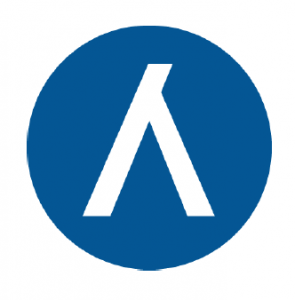
Alloy crafts exceptionally engineered products that inspire delight and loyalty in the people who use them. We collaborate with top designers to bring their visions to life by applying creativity, experience, and sound engineering principles to solve difficult problems. Mechanical engineering is what we love to do. And it’s all we do.
What’s your studio’s design philosophy?
We take a data-driven approach to engineer great user experiences. Marketing and design play important roles in creating the initial desire or need for a product, but once the product is in a user’s hands, the quality of the engineering is critical to how a user feels about the product. Does it feel solid? Do the mechanisms work smoothly? Does it hold up over time? These are important experiences that foster loyalty to a product and brand. We do the math, analysis and tests to back up those experiences.
What motivates you to do great work?
Making people happy is the extrinsic motivator. The “ah-ha” moment is the intrinsic motivator. Making people happy applies to our clients, employees, and end users of the products we help develop. With clients, that does not just mean doing whatever the client asks. It means doing what we know is best for the success of a project and getting the client’s buy-in so we are collaborating towards a common goal. With end users, it’s always exciting to see real people actually benefiting from the products we’ve worked on. We keep those users in mind, not just the project specifications, as we work through a problem. Keeping employees happy means providing interesting challenges to work on, great colleagues to work with, strong compensation, and flexibility. It’s all a tricky balancing act, but very rewarding in terms of growing business opportunities, building a great team to fulfill them, and creating a positive, friendly work environment. The “ah-ha” moment is the thrill of coming up with a clever idea that solves a nagging problem that has a lot of people scratching their head. It’s an affirmation that you have something unique to offer as an individual.
What’s your studio’s superpower?
Collaboration. As a group focused on just engineering, the success of our work relies on being able to integrate the needs and wants of all the other disciplines needed to develop great products. To that end, we need to be methodical about setting expectations at the outset of a project, understanding the importance and role of each discipline, communicating very clearly all along the way, and, most of all, being open to others’ ideas.
What’s the first project your company worked on?
Alloy’s founding partners, Arturo Meuniot and Chris Fruhauf, each had their own consulting companies when they launched Alloy together in 2008. At the time Chris was already working on the first Beats By Dr. Dre headphones and Arturo was working on the Jawbone II Bluetooth headset. These projects helped set the tone for Alloy helping our clients bring great design visions to fruition.
How do you go from concept to finished product?
Every client has very different needs and expectations, so we’ve had to develop (and continue to develop) a very deep bag of tricks. That said, we do generally apply a 5-phase process that can be adapted to a variety of projects: Define, Validate, Integrate, Refine, and Ramp. This in itself is nothing revolutionary, but there are two key elements to this process that we emphasize. First is setting expectations and creating a realistic plan at the start rather than just diving in and working furiously towards a moving target. There is always some amount of ambiguity to embrace, but we recognize that and figure out the right tasks to eliminate those ambiguities. Second is what we call the “analysis, prototype and test loop.” Analysis tools, such as FEA software, have become more and more powerful, allowing us to digitally predict physical behaviors of complex systems. However, the results aren’t always reliable or absolute, so we will often build physical prototypes and test them in the same way we are doing the digital analysis to draw a correlation between the digital and real world. This correlation allows us to then modify and iterate the digital analysis towards an optimized solution with higher accuracy and fewer physical iterations.
Where does the team find inspiration? How do you keep the team inspired?
The most important things we do to keep our team inspired are hire great teammates and work with appreciative clients. Nothing is more inspiring than working with other positive, bright people. Our teammates push each other to learn and come up with great solutions. We seek out clients who understand the value of rigorous engineering and who know that cutting corners is ultimately a losing proposition.
What keeps you up at night?
Over-committing our team. There are so many great opportunities out there and it can be very tempting to squeeze in just one more really cool project. We’ve learned to be disciplined about not accepting a project unless we can really give it the attention it deserves. The bigger challenge is knowing when existing projects will really wrap up. Often our clients keep us engaged longer than they initially intended because we make great progress together.
What medium have you never worked with but would like to try?
Electrons. To date, Alloy has been solely focused on mechanical engineering. While we feel focus is key to doing great work, we think it’s time to expand that focus to include electrical engineering. We’re already deeply involved in the mechanical aspects of EE in terms of PCB outlines, specifying connectors and switches, routing wiring, driving motors and such. Being able to design and program our own electronic systems from the ground up while sitting right next to the MEs would enable faster iteration and more thoroughly integrated products. We’re actively seeking a few great EEs with varied experiences to get us started in that direction.
What’s a typical day like at your office?
There’s usually a steady buzz of music and muffled noises from our prototype shop to provide the background for intense CAD design sessions punctuated with spontaneous reviews at someone’s desk, more formal brainstorming sessions, and meetings with clients. We all wear several hats and may find ourselves assembling a prototype in the shop all day or flying overseas to manage a pre-production build at factory the next.
Does the firm have a mascot / sacred room / nicknames / anything quirky?
There is a large stuffed elephant with a USB thumb drive retro-fitted to the end of his trunk that seems to find its way around the office. Alloy’s partners also named the conference rooms after some classic bands like AC/DC, Van Halen, and Pink Floyd. We even have the album artwork posted next to the doors!
What project has had the biggest impact on you?
Probably our work for Beats By Dr. Dre. It’s drawn a huge amount of attention in the industry and public.
What are three things you believe in right now?
First, people: the right people can make anything happen. Second, change is coming (though, not winter around here). While manufacturing processes for mechanical components aren’t changing as rapidly as other fields, there have still been significant advancements in the past decade and we’re excited to see where we’ll go with things like 3D printing in mass production in the coming years. Third, there will always be a need for face-to-face collaboration. For now that still means being in the same place at the same time. VR may get us there one day, though we’ll need better real-time language translation tools as well.
What are you currently fascinated by? How is that feeding into your work?
The fact that what seems so modern, beautiful and cutting edge today may one day seem boring, ugly, or useless. Knowing that helps keep our work in perspective. On the one hand, it means time to market is that much more important. On the other, it means that it’s worth taking the time to refine the design and engineering to be timeless and robust.
What excites you about the future of design?
I’m excited by the fact that consumers, and thus clients, have embraced the value of well designed and engineered products. It’s not good enough to have a highly functional product or a simply beautiful product. It needs to be both to find lasting success. The Internet has made it impossible to bury product flaws in marketing hype – the consumer’s voice is too loud. Those are the kinds of projects we want to work on!
How does San Francisco influence the work you do?
Being in San Francisco has certainly influenced our client list, though we can’t name names. Clients recognize the additional value in working with a team that is physically close. First and foremost though, we have to be really good at what we do to stand out among the crowd of other Bay Area consultancies and charge rates that allow us to operate in such an expensive city.
Any upcoming, exciting projects you can talk about?
Unfortunately no. Confidentiality has become tighter and tighter over the years and we go to great lengths to protect our clients’ information. I think there are three main reasons for this clamping down. First, the pace of development is so rapid that it’s easier for competitors to catch up and beat each other to market. Second, data can proliferate so easily through digital media that it’s impossible to control leaks. Third, certain product categories have so many players trying to distinguish themselves with subtle differences in feature sets and design and it’s those differences that can make or break a product in such a discerning market place.
Wine, liquor or beer?
At our regular Friday happy hours we like to try out different craft beers and mix up a few cocktails. Who doesn’t like a good Old Fashioned!?
What are studio’s tips for other designers out there who may just be getting started?
Find a job that will give you a variety of experiences – different types of projects and different stages of development. This will help you figure out where your passions and skills lie while providing a well-rounded background for your future. Don’t be seduced by perks and stock options. Real job satisfaction comes from working on meaningful challenges with brilliant people.
If your studio had a motto, what would it be?
“Fast only counts when it’s right.” I’ve seen too many people race into a brick wall and have to start over. Be disciplined in your work and make sure you have identified the right problems to solve in the first place.
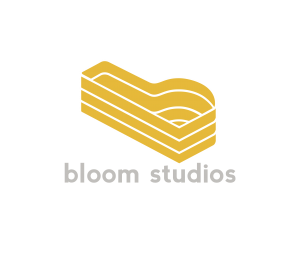
Founded by Darryl Kirchner and Fabian Molina in 2012, we started with over 10 years of experience under our belts. Having polished our skills and merged our freelance careers, we decided to concentrate on building something together, something from the ground up, something we’d be proud of. That something became bloom studios. We’re a creative agency in the heart of SF.
Can you tell me a little about which project got your studio off the ground?
Chegg… there were a couple big ones. Mostly working with specific clients. Finding contacts based on the people we knew and scavenging craigslist. Chegg gave us a breadth of work. Piano Heights was in a couple film festivals and olivari that was with another agency.
What’s your studio’s design philosophy?
Fabian: Both of us have a simple aesthetic. Clean and organized as much as possible. Even though we try to stick to modern and simplicity we also know what came before us. what works what has proven to be successful
Darryl: Taste. There is a technical aspect and understanding what is current, before and what the future it. That is what we try to strive for.
Fabian: Timeless. We try to not to be too kitschy like memes or follow crazy trends.
What motivates you to do great work? :
Fabian: besides each other. Everyone else that is doing great work in the world.
Darryl : I am inspired by humans. I am drawn to the stories people carry with them.
What’s your studio’s superpower? :
Darryl : Coffee…
Fabian: We are young and nimble and are adaptable
Darryl : We are a swiss army knife. We don’t want to put anything out into the work without it being the quality we expect.
What’s the first project you were passionate about?
Darryl : The First big project we got to work on together was an 8 episode TV series made up of eight thirty minute episodes.. I was doing freelance and our company wasn’t full time yet. I was the editor and we needed a graphics animation and he {Fabian} did all of the motion graphics.
Fabian: But it really did bring us together.
How do you go from concept to finished product?
Darryl : First thing is to identify the objective and study. Try not to have preconceived ideas. We will try to drive conversation to each other or to the team as we grow and the project progresses.
Fabian: When we get a project or client it is a blank screen and things haven’t been filmed yet. We get the most information and noodling through research. then we push something on to that blank page and critique the hell out of it.
Darryl : Asking the client to be Direct is key. We want to produce the best product out for ourselves and the client. We try to look at it objectively so everyone is satisfied.
Where does the team find inspiration? How do you keep the team inspired?
Fabian: We watch films and see other companies doing cool things. We all go on tries and we all take cool photos and videos.
Darryl : San Francisco and the state of the world is ag huge motivating factor. It is our responsibility to help discuss social change and the things that are important to us and complacency is not the right approach.
What keeps you up at night?
Fabian: Clients. Deadlines. We came in as artists and now we understand all of projects from the high level how how much and managing and customer communication goes into a project
Darryl : EE still are artists but we don’t do as much of the editing, animating and brainstorming what are the possibilities. I get really excited about a new project.
What medium have you never worked with but would like to try?
We have done a little quick spot motion. It would be cool to do a whole video in stop motion. More scripted storytelling. We love to tell stories. Just telling stories that are more meaningful and can reach a larger audience. We haven’t done as many indie short films more cinematic short films.
What’s a typical day like at your office?
Coffee. Today lunch involved a beer. Usually 10-14 hours of work. Two hours of walking our dogs.
Does the firm have a mascot / sacred room / nicknames / anything quirky?
The dogs are our mascots-Frenchie.
Any upcoming, exciting projects you can talk about?
Darryl : UCSF we have 30 minute film which is mostly documentary and has an awesome illustrated and animation. It is currently only in the hospital network but hopefully will be on PBS.
Fabian: Le Petite Academy – we just did a new logo and marketing materials and a new website with design elements they created. We wanted to work with a non profit and give back.
Darryl : our own branding has been a year long process. We started as a video production co and have grown into a full creative agency.
What are studio’s tips for other designers out there who may just be getting started?
Fabian: Just always push yourself and be very critical. Get opinions from people you respect.
Darryl : Humility is the most important lesson in any type of great work.
How would you describe your working style?
Fabian: Very collaborative. Working smart not just hard.
Darryl : We try to be efficient.
What is your company culture like? Who/what do you value most?
Darryl: We are all about our people. Drawing inspiration from them and providing inspiration for them.
Fabian: We like to put them in a position where they can be their best selves. We like to provide opportunities to have a good time.
Why do clients choose you?
Darryl: I think it comes down to taste, people know we have good taste. They can come to us with an ideas and it can be whatever they need and they trust us. And we empower them through the process so by the time the project is over they don’t want to work with anyone else.
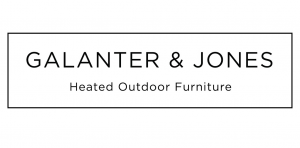
Galanter & Jones is a design build company that makes the world’s first line of heated outdoor furniture.
Can you tell me a little about which product got your studio off the ground?
Aaron: Wow, how to begin…I was working doing Landscape Design and I had an opportunity to do a project that had some seating with a lot of creative leeway. So I came up with the ideas to make it headed to make similar to helios. It was supposed to be a one off and turned out to be a great way to keep warm outside. Then I saw an opportunity to turn it into a business. It took about 10 months of prototyping.
How is it working with your Sibling?
Miranda: It is good. It is like any other partnership. We are never going to get divorced and we are never going to not be partners. Being a small business is hard and it is great to do it with someone you like, trust, and know so well. We are also roommates – when was the last time you lived with your sibling (they both chuckled).
What’s your studio’s design philosophy?
Aaron: Simplicity and quality. The simplest solution is usually the best.
What motivates you to do great work?
Miranda: There is a lot of pride in this situation. There is not much separation between us and the company – it is all very personal.
Aaron: We grow the company on quality work. It would be hard to build a foundation if we didn’t have great products.
What’s your studio’s superpower?
Miranda: Tenacity.
Aaron: Yes, tenacity and persistence.
How do you go from concept to finished product?
Aaron: I made it up as I went along. I don’t have any formal training. There is something to be said for being self taught. And that is why the product is unique because I didn’t do the same thing as ever. I choose the materials I wanted to work with and choose a shape and kept it simple.
Where does the team find inspiration? How do you keep the team inspired?
Aaron: I find inspiration in the outdoors.
Miranda: Definitely, we make stuff for the outdoors so people can be more comfortable. The shapes, materials and colors are all inspired by the outdoors. That is one of the most satisfying thing is seeing our pieces in the different outdoor spaces and styles and seeing how well the work in every one.
What keeps you up at night?
Aaron: the need to grow. The desire to grow.
What’s a typical day like at your office?
We usually have clients coming by for studio visits. Aaron oversees production during the day. Sometimes there are pick-ups for deliveries. We have been getting ready for upcoming shows a design crates for new york. Always involving production and what ever we can make time to working while that is happening.
Does the firm have a mascot / sacred room / nicknames / anything quirky?
Miranda: We have a lot of boats and motorcycles.
Arron: Because I can store my hobbies here. Aaron’s greatest joy what the roll up door we he could
What project has had the biggest impact on you?
Miranda: Right after we launched the embarcadero centered put in an order in for four pieces and it was so incredible that a landmark in San Francisco wanted our pieces. It was such a cool thing to see them out in the wild in a place that is so representational of San Francisco.
What excites you about the future of design?
Arron: The new materials. There will be a lot of new materials at our disposal in the next ten years.
How does San Francisco influence the work you do?
Miranda: San francisco is exciting because this is a city full of early adopters and people who appreciate where form and function meet. Our product is an example of that: an elegant solution to solving a problem and the city responded to it. SF is very specific that way and we have been able to get a toe hold
because we live here and people appreciate what we do.
Aaron: San Francisco is the perfect place to introduce something like this.
What are studio’s tips for other designers out there who may just be getting started?
Both: We Keep it simple.
If your studio had a motto, what would it be?
Miranda: Form and function in a comfortable package.
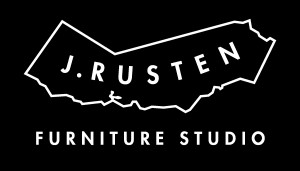
J. Rusten Furniture Studio is one of only a few remaining San Francisco-based design/build woodworking studios. Since 2002, Jared has developed and exhibited scores of original studio furniture pieces in addition to producing numerous custom commissions. His work has been exhibited at the Harvard Graduate School of Design, The International Contemporary Furniture Fair and other gallery and museum venues.
Simplicity, Beauty, Harmony, and Longevity. For the last 10 years or so, I’ve sought to achieve in studio furniture what Apple has done with electronics: produce beautifully functional objects that have been edited to only their most vital and spartan forms. Unlike the ephemeral nature of electronics though, a carefully wrought chair can serve it’s purpose for decades and even centuries. And, instead of a fetish for glass and aluminum, my medium is wood, and because the inherent beauty of wood demands a special respect, I craft each piece to the highest standard I am able. I feel like I’m most successful when the singular brilliance of a piece of wood is brought into harmony with the design that is framing it, without any distraction or unnecessary decoration. The silhouette of the form and the grain of the wood shouldn’t fight for attention, they should create a pleasing chord.
What motivates you to do great work?
I’ve been very fortunate. I’ve been able to do the kind of work that I love (that I would do as recreation) for the last 14 years, and I feel a sense of obligation. For me to simply reproduce what has come before (no matter how cool or how in demand it is) feels especially selfish. So, I’m motivated to contribute… to earn my privilege as a maker by adding to the vocabulary of furniture design in the same way my heroes like Sam Maloof, George Nakashima, and James Krenov did. Obviously, I’m not doing something as humanitarian as developing water systems or working to fight climate change, but what motivates me is the opportunity to create something compelling that advances the state of the medium and inspires others.
What’s the first project your company worked on?
From the beginning, I’ve been drawn to chair design. The first exhibited pieces were explorations of bent-laminated seats, something I continue to revisit every few years.
How do you go from concept to finished product?
I cultivated my analog skills before computer aided design became the standard. So, I still start with conceptual sketches, which are developed into full-scale drawings, then full-scale 3-d prototypes which are hacked apart and tweaked, and then finally a finished piece. A design isn’t usually fixed until the 3rd or 4th iteration though… it always takes some time living with a piece to see how it might be improved by degrees.
What keeps you up at night?
I’m kept awake by the panic of projects yet unrealized and knowing there are pieces of mine in the world that I could do just a little better now with greater experience.
What medium have you never worked with but would like to try?
I would love to learn how to sew and work more with leather and textiles.
What’s a typical day like at your office?
Email from 9-10am, work in the studio until 7pm, and then a “second shift” in the studio from 9pm-midnight when my fiancee will allow it.
What are three things you believe in right now?
Enduring > Ephemeral
Classic > Clever
Timeless > Trendy
What are you currently fascinated by? How is that feeding into your work?
I feel a little late to the game, but I’ll confess the same fascination with metals that has been going on for the last few years. As a compliment to wood, and as a material that can also get better with age, I’ve recently had some bronze legs cast for a series of tables. I’m resisting incorporating brass/bronze/copper to dress up pieces just for decoration, but use those materials only when it simply makes the most sense.
Any upcoming, exciting projects you can talk about?
At the moment, I’m most excited about my Modern Rocking Chair. It’s taken a number of years to develop and I think it’s a culmination of many different explorations. I think it’s a very successful piece and I’m just trying to keep up with the demand. Each one takes a very long time to build, but I’m trying to get as many people as possible to experience them.
Wine, liquor or beer?
Wine to socialize, beer to relax, and liquor to dance.
If your studio had a motto, what would it be?
Vita brevis, ars longa: Life is short, art is long. It reminds me that I have a short time here and lots of work to do.
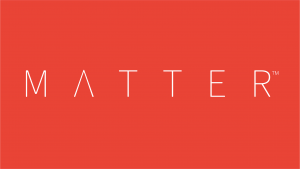
Matter™ is a San Francisco-based design and innovation firm founded by Max Burton. We work in the areas of industrial design, interaction design and experience design. We believe that understanding the human experience is the starting point for innovation. Through our creative process, we seamlessly integrate products and services to deliver holistic solutions that meaningfully connect with people.
What’s your studio’s design philosophy?
We believe that understanding the human experience is the starting point for innovation. Through our creative process, we seamlessly integrate products and services to deliver holistic solutions that meaningfully connect with people. Our studio is specifically organized to deliver design for the connected world. Our emphasis on narrative and storytelling, close client collaboration and fast-paced iterative prototyping assures we produce work that is both inspired and relevant to the end user.
Where does the team find inspiration? How do you keep the team inspired?
We find inspiration in art, history, and nature; we stay motivated through our familial atmosphere and commitment to quality and honesty.
What keeps you up at night?
It’s easy to sleep well if you’re honest and you go to bed knowing you’ve done a good day’s work!
How do you go from concept to finished product?
We follow a phased process; we start with the brief and then we stay engaged throughout the project as much as we can; ideally through production and distribution.
What medium have you never worked with but would like to try?
Architecture!
What does your leading designer’s / CEO’s desk look like?
Its very boring – only a monitor and a mouse.
What’s a typical day like at your office?
Morning are design reviews & critiques, then we go to lunch together, and then afternoon is usually client meetings and hard work. On Fridays we BBQ or go out for beers.
What project has had the biggest impact on you?
The future projects!
What are you currently fascinated by? How is that feeding into your work?
We are fascinated by materials, and staying true to them. We’re interested in designing into the future – not too far into the future, mind you – but we like to help predict what products will look like in ten or twenty years.
What excites you about the future of design?
Technology is getting more ubiquitous, smaller, lighter… as it begins to disappear into the environment we can have much more natural, engaging experiences!
How does San Francisco influence the work you do?
We love the restaurants and the easygoing atmosphere – we like that we can be friendly with our competitors and have a beer with them and share our learnings.
Any upcoming, exciting projects you can talk about?
Many exciting ones, none that we can talk about!
What are studio’s tips for other designers out there who may just be getting started?
Don’t send in a 1,000 word introductory email asking for a job – the first thing we do is look at the work! Please keep it short and let the work speak for itself. Also, learn Rhino and have the technical chops that school doesn’t teach you, but also don’t rely on the computer. The internet is not a good place to do design research; you have to do it yourself.
If your studio had a motto, what would it be?
Design Doing, not Design Thinking…Predict the future, and be honest!
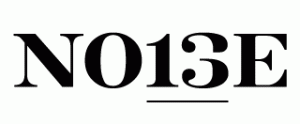
Noise 13 is a brand strategy & design agency that works in partnership with their clients to build insightful, compelling lifestyle brands. We believe that through a strategic combination of Life + Style, beautiful and functional design can emerge.
What’s your studio’s design philosophy?
We develop beautiful, functional branding and design through insight and collaboration. Our philosophy centers around LIFE + STYLE.
LIFE is about discovering the interests, values, and attitudes of our clients’ customers. By centering efforts around these people-centric insights, brands can inspire, guide and motivate an audience, adding value and definition to their way of life.
STYLE is about standing out with strong, relevant messaging and visual design that aligns with the communication goals. By first understanding the customer, we’re able to create a distinct style for every brand, allowing each to express their own unique identity.
How does San Francisco influence the work you do?
We’re extremely grateful to be part of such a thriving, creative community for over 15 years. San Francisco provides us with individuals who are inspiring, as well as brands and companies we admire and influence our daily lives. Those brands become our clients and those talented individuals become our co-workers, something we feel very fortunate to experience.
What motivates you to do great work?
We love turning ideas into something beautiful. We love making our clients happy. We love seeing our work out in the real world, knowing that it started as a small seed of an idea and developed into a real-life logo/billboard/package/website/etc. And while it’s an extra treat to see our work on design blogs and in magazines, at the end of the day our goal is help our clients solve problems through thoughtful, elegant, and relevant design. If we’ve accomplished that, then we’ve done our job.
What’s your studio’s superpower?
Collaboration.
What’s the first project your company worked on?
Branding, including all retail design materials, marketing, and website for TeddyCrafters (competition to Build-A-Bear back in 2000).
How do you go from concept to finished product?
A lot of conversation, sketching, moodboarding and collaborating with our clients and our team internally. Because we work so collaboratively as a studio, we think it’s important to hear all the “what-ifs” and “maybes” so we can ensure not only the best, but most beautiful and effective finished product.
Where does the team find inspiration? How do you keep the team inspired?
Other than the obvious (the internet), we try to find inspiration around the city and on our individual travels. Attending trade shows, talks and other events, both in and outside of SF is not only a great way to network, but to gain new insights. Gathering inspiration from those on the Noise 13 team is also really important to us. We share a lot of Pinterest boards throughout the office, organize team outings, and have weekly team lunches to chat about various topics. We also keep a board in the office where we physically pin a few of our most recent designs of current projects so we can inspire each other and receive feedback – with fresh eyes always comes a new perspective.
What medium have you never worked with but would like to try?
Anything that prints from a 3D printer.
What’s a typical day like at your office?
Our days are filled with client meetings, internal brainstorms, group lunches, dog walks, and of course head-down design time. We’ve also been known to make ice cream runs on hot days and have instructional moonwalking sessions. And let’s just say happy hours are not an unusual occurrence.
Does the firm have a mascot / sacred room / nicknames / anything quirky?
Our mascots also double as our security guards: Bo and Porter, the office dogs! We also have a few in-office nicknames for our co-workers, but we’ll keep those private for their sake. We’re also a little nuts about trivia, and have been known to frequent Tuesday Trivia Nights at Yield Wine Bar. However, we’re trying to expand our bar game repertoire … next up: darts!
Any upcoming, exciting projects you can talk about?
We’re enjoying our on-going partnership with tech companies Orion and Tile, working on a few different deliverables for each including packaging and marketing materials. Other projects in-progress or nearing completion is the new website for Faraday Bikes and our new partnership with Bi-Rite Market, we’re thrilled to start working with them! Internally, we’re working on a much needed office-decor-refresh for our space and will debut a few of the finished projects by Design Week!
What are your studio’s tips for other designers out there who may just be getting started?
Some of the skills that we most value in young designers are a strong work ethic and willingness to learn. For a small, collaborative group like ours, these attributes are tested every day – our designers must be resourceful, self-starting, and open to feedback from peers. A well-rounded portfolio will also give you a leg up in our book; we really admire a designer’s ability to work across multiple styles, as well as in different media. Lastly, kindness and honesty go a long way.
If your studio had a motto, what would it be?
“Coming together is a beginning. Keeping together is progress. Working together is success.” – Henry Ford
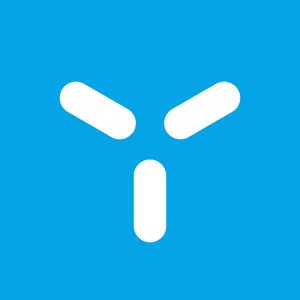
Y STUDIOS is a design and research company located in the creative hub of San Francisco. We use socio-cultural intelligence to spark innovations that help our clients gain a competitive edge. Diversity is key to what we do. By cross-pollinating our creativity across different cultures, design disciplines and industries, we bring fresh perspectives to everything we do.
What’s your studio’s design philosophy?
We believe in beauty, utility and meaning for everything we design – to create simple joys that people will love to use and keep around for a long time to come.
What motivates you to do great work?
Creating meaningful connections that touch people deeply.
What’s your studio’s superpower?
People.
What’s the first project your company worked on?
A computer tablet design for Philips Electronics.
How do you go from concept to finished product?
We believe in an integrated approach where we use research to get to know the market and consumer, before we design the most optimal solution for them. A thorough follow-through from concept to production is key, and we have the experience of working with factories to ensure the original intent of the design is implemented during production.
Where does the team find inspiration? How do you keep the team inspired?
We always encourage our designers to take time to embrace their surroundings and find beauty in the everyday mundane. True inspirations prosper when you keep it real.
What keeps you up at night?
Thankfully, nothing.
What medium have you never worked with but would like to try?
Ceramic and textile.
What does your leading designer’s / CEO’s desk look like?
It’s a hot mess.
What’s a typical day like at your office?
Organizing chaos, multitasking in multiple projects, slow down for chai at 4pm.
Does the firm have a mascot / sacred room / nicknames / anything quirky?
No need for gimmicks, just honest good work.
What project has had the biggest impact on you?
All our projects have been fun and we learn so much from each one of them. We’re constantly looking for the next big thing.
What are three things you believe in right now?
Not just now but always…grace, integrity, curiosity.
What are you currently fascinated by? How is that feeding into your work?
Always fascinated by the mercurial qualities of human behaviors and how that continually evolve over time. Knowing exactly whom you are designing for is always challenging and exciting to discover.
What excites you about the future of design?
It is encouraging to see that the value of design is gaining more public awareness and importance amongst businesses. Good design can only happen when there is mutual respect and appreciation of complimentary expertise. We need to build a closer collaboration between business leaders, designers and product development folks.
How does San Francisco influence the work you do?
Embracing city life always energizes the soul and inspires the mind. Technology, food, culture, the ocean, the outdoor, new ideas, the entrepreneur spirit…it’s all here and makes up for a potent brew of inspiration.
Any upcoming, exciting projects you can talk about?
Y Studios is organizing a series of Salons and Neighborhood Walkabouts in the summer and fall. Please email lisa@ystudios.com for more info.
Wine, liquor or beer?
Chai.
What are studio’s tips for other designers out there who may just be getting started?
Be curious, be open-minded and be humble.
If your studio had a motto, what would it be?
Defy stereotypes and be true to our core values.


